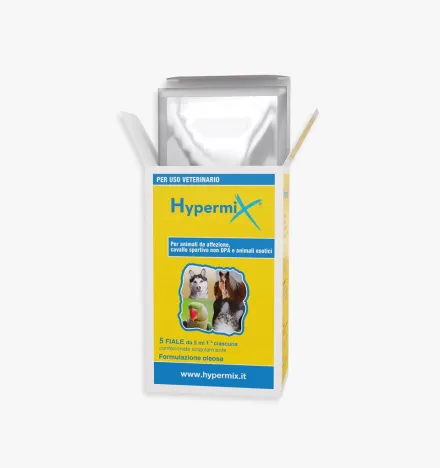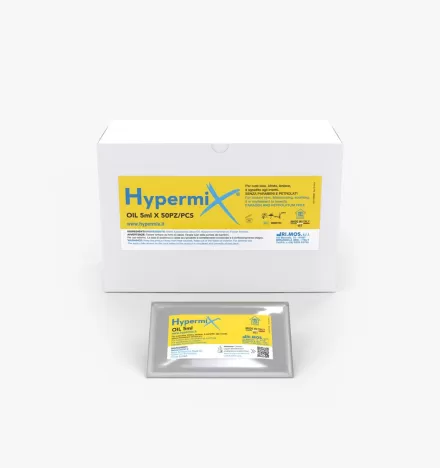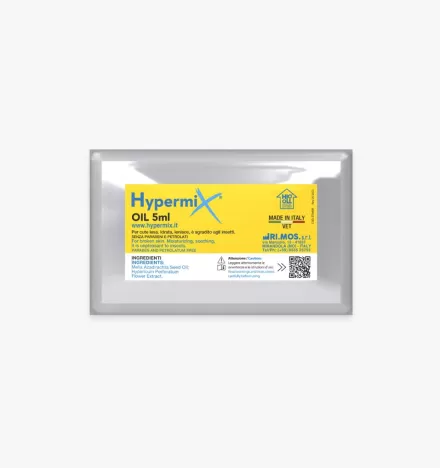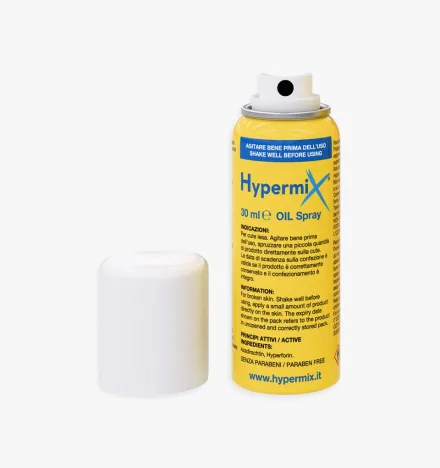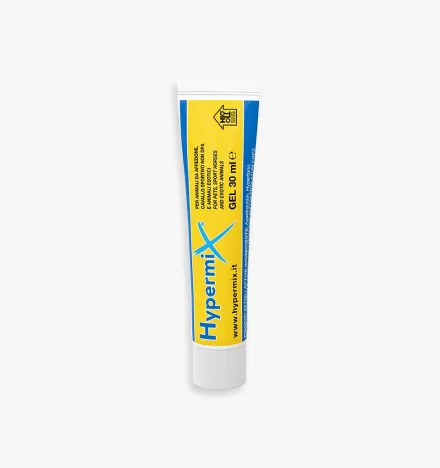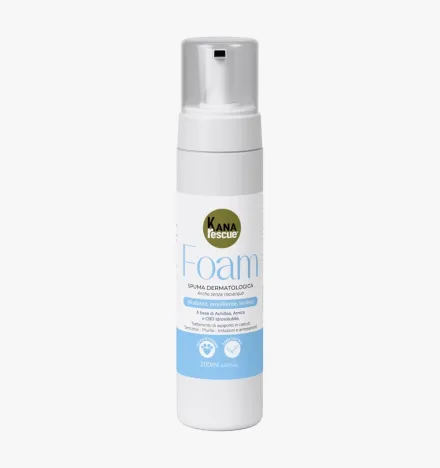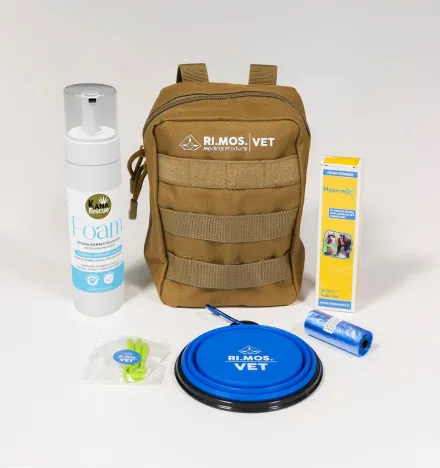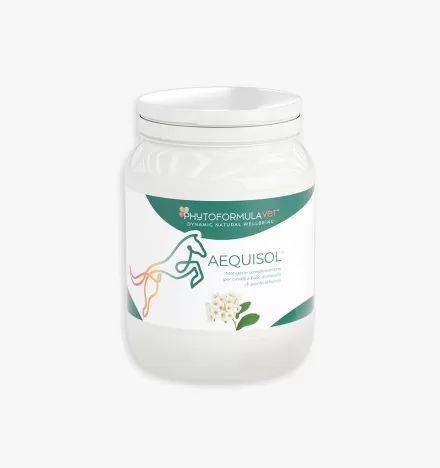Lesions in animals: everything you need to know
Wounds in animals can range from simple abrasions to deep injuries that require immediate intervention. Recognizing their severity, knowing how to treat them, and preventing complications is essential to protect the animal's health and well-being.
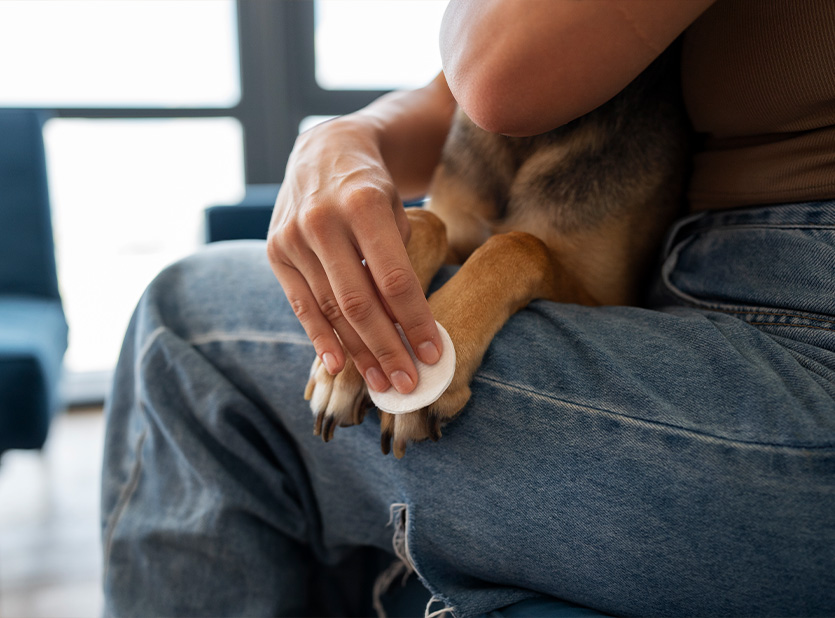
WOUNDS: RECOGNIZING THEM, TREATING THEM, PREVENTING THEM
Wounds are a common issue in the lives of animals, especially those that live outdoors or interact frequently with other animals.
Common wounds include scratches, superficial abrasions, bite wounds, stab wounds, and deep lacerations, each of which requires specific attention to avoid infection or more serious problems.
Intervening quickly, monitoring healing, and following your veterinarian's instructions are actions that ensure a full and uncomplicated recovery for your pet.
WHAT IS MEANT BY WOUNDS?
When we talk about wounds in animals, we are referring to a wide range of injuries that can involve the skin and underlying tissues, with very different levels of severity and complexity. They range from superficial wounds, such as abrasions or small cuts, to deep injuries that may involve muscles, tendons, or even internal organs. These also include special conditions, such as necrotizing injuries, post-surgical wounds, and burns, which often require specialized interventions.
More specific situations should not be forgotten, such as wounds complicated by larval infestation (miasis) or those caused by skin diseases or circulatory complications leading to pressure sores or ulcers.
Issues related to particular areas of the body, injuries to the skin adnexa (hooves and nails), can also be considered injuries, as can more complex traumatic events, such as prolapse of the rectum or exposed otohematomas.
Every wound poses a risk not only to the skin, but to the animal's overall health, as it can become an entry point for infection-causing pathogens. Therefore, it is critical to identify and treat wounds in a timely and appropriate manner, ensuring a safe healing path and reducing the risk of complications.
Types of wounds
Wounds in animals can be classified into several categories according to their origin, depth, and complexity. This subdivision helps to better understand their characteristics and to define the most appropriate therapeutic approaches.
The main types of wounds include:
- Superficial wounds: these include abrasions, scratches or small abrasions that affect only the outermost layers of the skin. They are generally less serious, but can become infected if not treated properly.
- Deep wounds and lacerations: wounds involving deeper layers, such as the dermis, subcutaneous tissue, and, in some cases, muscles or internal organs, fall into this category. These wounds, often caused by trauma, bites or cuts on sharp objects, require prompt intervention to prevent infection and permanent damage.
- Infected or complicated wounds: some wounds may be contaminated with bacteria, larvae (as in the case of myiasis) or foreign bodies. Necrotizing wounds, for example, are characterized by progressive tissue destruction and are a serious complication requiring specific treatment.
- Traumatic injuries: result from events such as falls, violent impacts or assaults. They may be accompanied by contusions, fractures or internal injuries. These include prolapses.
- Post-surgical wounds: these are injuries intentionally created during surgery. Their proper management is critical to ensure optimal healing and prevent infection or complications.
Burns and Bedsores
Burns and bedsores can also be included in the list of animal injuries: the former can result from heat, chemicals or electric shock, while decubitus injuries develop in animals immobilized or confined in one position for a long time. Both require specific care to help restore damaged tissues.
Each type of wound has unique characteristics that require a specific approach, from cleaning to dressing to managing complications. Recognizing and classifying the wound correctly is the first step in ensuring the animal's recovery and well-being.
CAUSES
Injuries in animals can have multiple causes, related to both external factors and internal conditions in the body. Understanding the origin of the injury is essential for targeted intervention and preventing future episodes.
- Accidental trauma: household accidents, collisions with sharp objects or falls are among the most common causes of injury, especially for animals that live in the wild or have access to open spaces.
- Aggression or fighting: confrontations between animals, often related to territorial or hierarchical dynamics, can result in bites, scratches or lacerations of varying degrees. These injuries are particularly common in cats and dogs.
- Parasitic infestations: fleas, ticks, and mites can induce intense itching, leading the animal to scratch or bite to the point of injury. In the case of myiasis, larvae can cause direct injury during their colonization in exposed wounds.
- Skin or systemic diseases: some diseases, such as dermatitis, onychomycosis or skin infections, can evolve into ulcerative lesions. Systemic diseases that weaken the immune system or alter healing also increase the risk of wounds.
- Surgery: post-surgical wounds are unavoidable after surgery, but can develop into problematic injuries if not properly cared for or if infection develops at the suture line.
- Environmental causes: extreme conditions such as intense heat, frost or contact with chemicals can cause burns or exposure injuries.
- Prolonged positions or immobility: animals immobilized for long periods of time, due to illness or trauma, are at risk for pressure sores, especially in areas where the skin is thinner and subject to pressure.
SIGNS AND SYMPTOMS
Recognizing the signs and symptoms of wounds in animals early on is critical for effective intervention and preventing complications. Each type of wound can manifest in different ways, but there are common indicators that help identify the problem.
- Visible signs: wounds often present with obvious lesions on the skin, such as cuts, abrasions, lacerations, or swelling. The presence of blood, scabs, or purulent discharge may indicate an ongoing infection or contamination of the wound.
- Inflammation: redness, warmth, and swelling around the affected area are clear signs of an inflammatory process, which is common in many wounds, especially if deep or infected.
- Pain and discomfort: animals with a wound tend to show signs of pain, such as vocalizations, lameness, reluctance to move or frequent attempts to lick, bite or scratch the affected area.
- Hair loss: in localized wounds, hair loss may occur around the injury, due to the trauma itself or the animal's continuous licking and scratching.
- Abnormal secretions: the discharge of fluid from the wound, such as serum, blood or pus, is a sign of infection or a complication of healing. Unpleasant odors are another indicator of an infected wound.
- Behavioral changes: an injured animal may become more restless, anxious or, conversely, apathetic and less responsive. Alterations in behavior, such as reduced activity or aggression when the injured area is touched, are signs not to be underestimated.
- Systemic signs: in severe infections, general symptoms such as fever, loss of appetite, lethargy, or difficulty breathing may be observed. These signs indicate that the problem may have spread beyond the local wound.
Complications
Wounds, if not treated properly, can lead to significant complications, including bacterial infections, abscess formation, and tissue necrosis. Infections are among the most common risks and can manifest as swelling, purulent discharge, foul odor, and, in severe cases, fever or systemic symptoms. Other possible complications include slow healing, abnormal scar formation and, in some cases, spread of infection internally, with serious consequences for the animal's health. Early intervention and appropriate management are critical to avoid them.
DIAGNOSIS
The causes and symptoms of skin problems in animals are many and can present in different ways. Therefore, at the first signs of abnormalities, it is essential to consult a veterinarian who will proceed with a thorough observation and, if necessary, more in-depth examinations to identify the underlying cause and prescribe the most appropriate treatment, ensuring the animal's recovery and well-being.
PREVENTION
Prevention is the most effective way to reduce the risk of injury in animals and can be done in several ways:
- Ensuring a safe environment free of sharp or dangerous objects is critical, as is supervising interactions with other animals to avoid confrontations or aggression.
- Proper hygiene and regular use of pesticides help prevent infestation and itching, which is often the cause of self-injury.
- For animals facing surgery or being immobilized, closely monitoring wound healing and preventing pressure sores is essential.
- A balanced diet and regular veterinary checkups support the animal's overall health and healing ability.
NATURAL REMEDIES
Natural remedies can offer valuable support to promote wound healing in animals, especially in less severe cases or as an adjunct to veterinary treatments. However, it is important to use them with caution and under veterinary advice. Among the best remedies:
- Neem: Neem oil, with its antimicrobial and antifungal properties, can be used to prevent infection and promote healing of minor injuries...
- Hypericum: Hypericum oil, known for its healing and anti-inflammatory properties, is particularly effective for treating irritation or superficial injuries.
- Aloe Vera: Aloe gel, known for its soothing and healing properties, can be applied to superficial wounds to reduce inflammation and accelerate tissue regeneration.
These natural remedies can help promote faster healing, but it is essential to avoid applying unsafe or irritating substances. In the case of deep, infected or slow-healing wounds, a veterinarian should always be consulted to assess the most appropriate treatments.
MEDICAL TREATMENTS
Wounds in animals require appropriate medical treatment based on the severity and nature of the injury. The first step is always the intervention of the veterinarian who will provide the:
- Cleaning and disinfection of the wound with sterile saline solutions, veterinary-specific disinfectants and, if necessary, removal of foreign bodies or necrotic tissue.
- Suturing or wound closure for deep wounds or extensive lacerations.
- Antibiotics and analgesics in cases where infections are suspected or to prevent them.
- Specific treatments for complications: wounds that are infected, necrotizing, or complicated by miosis require more targeted interventions, such as drainage of abscesses, removal of larvae, or application of specific antimicrobial dressings.
NATURAL INNOVATION FOR THE TREATMENT OF SKIN PROBLEMS IN ANIMALS
Research in the field of animal health has led to the development of increasingly advanced and natural solutions for the treatment of wounds and skin injuries. Among these, Hypermix® represents a unique innovation due to its combination of plant ingredients, such as Hypericum and Neem, known for their regenerative, soothing and antiseptic properties.
Hypermix® is formulated to provide safe and effective treatment for animal wounds, from domestic to equids and even exotic animals.
Among the therapeutic options available to hydrate, protect and promote optimal tissue regeneration we recommend:
- Hypermix® Oil Spray: ideal for the daily management of traumatic or surgical wounds. Its light consistency penetrates deeply, keeping the skin moisturized and creating a barrier against infection.
- Hypermix® Oil in Vials: perfect for the treatment of small wounds. The oily formulation promotes direct contact with damaged tissue.
With Hypermix®, all it takes is three actions: cleanse, apply and, if necessary, cover the wound. It is a safe product and does not require the use of disinfectants.
GENERAL TIPS FOR WOUND CARE
Dealing with wounds in animals requires care, gentleness and adherence to some basic rules. Here are some practical tips to promote healing:
- Clean the wound carefully: do not use irritating products such as alcohol or disinfectants not suitable for animals. Prefer sterile saline solutions or products indicated by your veterinarian to gently clean the area without causing further damage.
- Protect the wound: prevent the animal from licking, scratching or biting the wound.
- Strictly follow your veterinarian's instructions for applying treatments such as Hypermix®
- Monitor progress: regularly check the appearance of the wound. If you notice redness, swelling, abnormal discharge or foul odor, see your veterinarian immediately.
- Keep the environment sanitized: make sure the animal lives in a clean, dry environment during the healing period. This reduces the risk of infection and promotes healing.
- Respect recovery time: even if the wound seems to have improved, follow the prescribed treatment in full. Treatment stopped too soon can cause relapse or complications.
Do you have a question?
Our team of experts has an answer for you!
What steps should be taken during the healing phase to prevent the animal from licking or damaging the wound?
During the healing phase of a wound, the animal may experience itching caused by normal healing. In such cases, specific devices such as Elizabethan collars, inflatable collars, breathable containment bandages, and braces can be used to avoid self-traumatization due to scratching, licking, and pecking.
What are the stages of wound healing?
There are three stages of wound healing:
Stage 1: exudative or inflammatory or also called cleansing stage
Stage 2: granulation or proliferative phase (granulation tissue formation)
Stage 3: epithelialization or regenerative phase (scar formation and epithelialization)
Highlights
Choose the beneficial properties of our effective and safe plant-based products for the well-being and care of your pets.
Subscribe to the Newsletter, for you 10% discount!
Stay up-to-date with all the latest news, promotions and exclusive offers from RI.MOS. VET.



